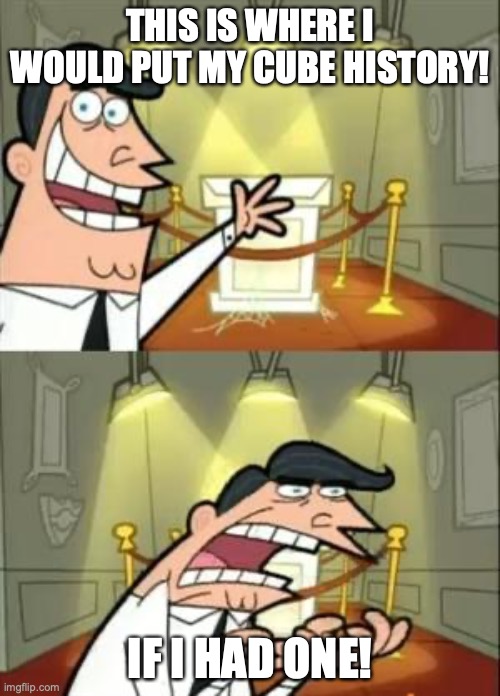Battle Report: Minesweeper Draft
The cube's inaugural outing: a minesweeper grid draft with 3 friends, with the goal of playing a 4-player Commander game after deckbuilding.
Minesweeper draft is basically a grid draft where the cards are dealt out face-down, with alternating cards on the outermost border of the grid turned face-up. The card in the center of the grid is also turned face-up. Players can then draft any card they want from the grid (whether it's face-up or not), and when a card is drafted, all facedown cards adjacent to it are turned face-up. I like this variant, especially for a group of people who haven't drafted the cube at all, because it gives everyone more information and allows them to get a feel for the cube and what they can expect in terms of power level, combo potential, etc.
The Draft: For the purposes of a Commander draft, I like to start the first grid with the outer border comprised entirely of legendary creatures so players can draft some commander options early. We drafted 3 grids of 90-something cards, with commanders available only during Grid 1.
The draft took a surprisingly long amount of time! My playgroup are all seasoned gamespersons who can boil down mechanics and rules pretty quickly, and they're all familiar with Magic's rules, but 90-something cards is a shitload of info, even if the majority of them are facedown. in the future I'll probably do more grids with fewer cards.
The minesweeper variant has a lot of potential for fun moments when new cards get flipped over and everyone starts chatting about which face-up cards they want the most, or they get quiet and cagey trying to pretend they don't want that new Fetchland that just flipped. Sometimes you flip over the perfect card for your deck and miraculously nobody else picks it for a full round, or you take a card that strongly signals your potential deck's strategy and everyone goes "oh, shit."
Deckbuilding: We build 60-card decks with 1 Commander in the command zone and no color-identity restrictions. I think color-identity is interesting and useful for constructed Commander, but brings very little to limited Commander. While Wizards R&D have to jump through a bunch of hoops for this rule, there's no reason for cube designers to do it.
My players built their decks a lot faster than we drafted them, and all of us have more experience with building a 60-card deck than a 40-card deck, so I actually think that made things easier for us. Way fewer agonizing cuts.
I did not write down decklists, but I remember everyone was excited about what they built. The friends I invited are all seasoned players, but they don't spend as much time trawling through spoilers and set lists as me, so I had the pleasure of hearing a lot of excitement about new cards people had not seen before, or hadn't seen in a long time.
The Game: We then sat down to a 4-player Commander game with our new decks. Right away, the gameplay was pretty much exactly what I wanted: lots of big splashy plays that seemed unbeatable but were then equaled or exceeded by the next player's big splashy play. One player was cruising to an early lead with a lot of Treasure synergies, but some well-placed board wipes put us all back to square one. However, instead of an interminable series of turns in topdecking mode, the recursion tools in the cube let everyone rebuild quickly.
Unfortunately, because the draft took so much longer than we expected, it was soon very late at night and we were getting pretty mentally exhausted. After two players were eliminated, the other two players ended up in a gigantic slugfest of huge creature tokens who all had lifelink. Every turn was a lethal swing, followed by interminable combat math and re-written life totals. Eventually an inevitable bookkeeping error led to a sort of stalemate where we couldn't figure out how to actually resolve the game.
Everyone had fun, but the conclusion was not very satisfying.
Lessons:
1:In future minesweeper/grid drafts, consider much smaller grids. Info overload is already a risk in a cube where every card has approximately 8 lines of text.
2: Consider smaller deck sizes, if for no other reason than it would require fewer cards in everyone's pool, thus facilitating a smaller card pool in general.
3: More board wipes. I was initially worried that board wipes would stifle the fun synergies I built into the cube, but in reality the most exciting turns came during and after a huge spree of board wipes and the race to rebuild. Board wipes are the only effective control valve on the huge value engines possible in this environment.
4: LESS lifelink. Experienced cube designers could probably have told me this one already, but lifelink is not that fun in this sort of game. In my opinion, cards that have lifelink native on their text box are not a huge problem, but cards that GRANT lifelink are where things get out of hand.
Changes:
Cut several lifelink-granting cards such as
Whip of Erebos and
Basilisk Collar for more board wipes, then made some adjustments to clean up the mana curve afterwards.

